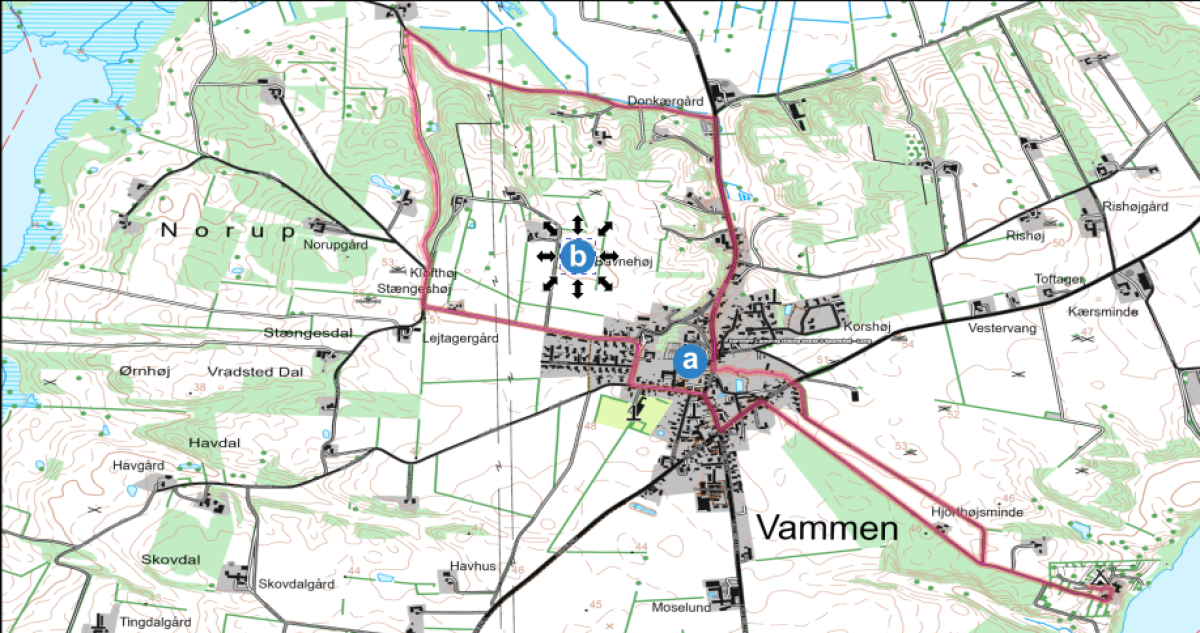Length 8.1 km
Walk a scenic route through Vammen, past the 13th century church and on through the old Ice Age landscape with meadows, gorges and views of Skals Å. The route takes you up through a meltwater valley to an impressive Bronze Age mound – a former beaver mound used for signaling in times of peace.
Follow the camping road towards Vammen and keep left at the Y-junction.
In Vammen, turn left onto Hobrovej.
At the intersection by the grocery store, turn right onto Nørregade. The road leads past Forsamlingshuset on your left.
Vammen Church from around 1200 has a Romanesque apse, choir and nave. The tower and porch are late Gothic additions.
You now pass through the oldest part of Vammen, Nederby, and outside the town you get a magnificent view of the vast stretches of meadow with Skals Å. You’ll also see the slopes, valleys and ravines of the Ice Age landscape, which this tour also passes.
Turn left on Vester Kærvej at the wastewater treatment plant.
This gravel road is a communal road that leads to some smaller properties located on the edge of the meadow. The road is also an access road to the meadows where farmers used to fatten their cattle and where peat used to be dug. The campsite also had small meadows here. Now many of the meadows are unused, which allows for a rich bird and animal life. At the farm Vester Kærvej no. 9, turn left and follow the black route up the valley to the information board at Norupvej – farm no. 36. Turn left and you’ll see a large Bronze Age mound. It is very high (56.3 meters above sea level) and was once a beaver mound.
Follow Norupvej until it ends in Haugårdsvej. Turn left onto Haugårdsvej. You pass Langsø Friskole and the road ends in Nørregade, where you turn right. At the grocery store intersection, turn left onto Hobrovej. Turn right onto Langsøvej and follow it to the campsite.
a) A village hall is a small town’s/village’s shared cultural center and meeting place used for lectures, meetings, events, private or public parties, etc. There are approximately 1,000 village halls in Denmark.
b) A beacon mound is a high point that was used from the Middle Ages until the 19th century to signal danger situations, for example from an attacking enemy. A woodpile, a beacon, was lit so that the danger signal could be seen from afar.



